The History Of Volkswagen Sharan

The Volkswagen Sharan is a large MPV produced by the German automaker Volkswagen since 1995.
The name Sharan is derived from a Persian word meaning "Carrier of Kings".
The Volkswagen Sharan/ Ford Galaxy joint venture project started in 1991. Plans were for both carmakers to enter the multi-purpose vehicle segment in Europe. Late in 1994 the fruits of this joint venture between the Volkswagen Group and Ford of Europe were revealed and production started in early 1995 at the Autoeuropa plant in Palmela, Portugal.
The Volkswagen Group subsequently rebadged the Volkswagen version in 1996, and sold it also as the SEAT Alhambra alongside the Sharan. Each of the three MPV models has its own subtle differences in exterior, and, for the Ford Galaxy, in interior design.
As of 2007, the annual production for the Sharan is in the 50,000 unit range; it is sold in Europe, South Africa and some Asia-Pacific and Latin American countries. In Mexico it is available with the 1.8L Turbo 4 cil 150hp with 5 speed Tiptronic gearbox in Comfortline trim only, while in Argentina it is available with the 1.8L Turbo 4 cil, and the 1.9L TDI 4 cil 115hp in both 5 speed manual and 5 speed Tiptronic transmissions in Trendline trim only.
The Sharan is not sold in the United States and Canada. Originally this was due to an agreement between Ford and Volkswagen, leaving the market free from competition for Ford's Aerostar minivan. More recently, Volkswagen decided not to introduce the Sharan in North America, ceased developing the Microbus concept, and instead introduced a badge-engineered nameplate variant of the Chrysler minivans as the Routan.
Sharan is currently offered with nine different engine choices:
- 2.0L 85kW (114hp) - 4 cylinder petrol
- 2.0L 85kW (114hp) - 4 cylinder petrol with LPG
- 1.8L turbo 110kW (148hp) - 4 cylinder petrol
- 2.8L V6 150kW (201hp) - 6 cylinder petrol
- 1.9L 66kW (89hp) TDI
- 1.9L 85kW (114hp) TDI
- 1.9L 96kW (129hp) TDI
- 1.9L 110kW (148hp) TDI
- 2.0L 103kW (138hp) TDI
The TDI 96kW (129hp) and the 2.8 V6 are offered with the option of 4Motion all-wheel drive.
The original Sharan was launched in 1995, and was available with five engine choices:
- 2.0L 85kW (114hp) 4 cylinder petrol
- 1.8L turbo 110kW (148hp) - 4 cylinder petrol
- 2.8L V6 128kW (172hp) - 6 cylinder petrol
- 1.9L 66kW (89hp) TDI
- 1.9L 81kW (109hp) TDI
The 2.8 V6 model had the option of Syncro all-wheel drive.
The Sharan received a EuroNCAP three-star safety rating when it was tested in 1999.
Awards
- 1999 Auto Express New Car Honours - Best MPV
- 1998 Top Gear Magazine Top Cars - Best People Carrier (Joint Winner)
- 1996 What Car Awards - Best People Carrier (Joint Winner)
- 1996 Auto Express Awards - Best People Carrier (Joint Winner)
The Sharan and its stablemates received a major facelift in 2000. At this time, VW also extended the wheelbase by 6mm (0.2in), increased the front and rear track, and gave it the "VW family" look of the time.
Awards
- 2000 Auto Express New Car Honours - Best MPV
A further minor cosmetic facelift was also done for the 2004 model year, in September 2003. This updated primarily the grill and the noticeable round tail lights, and added some new standard equipment such as air conditioning and curtain side air bags. From 2006, the Ford Galaxy production shifted to a dedicated Ford plant in Limburg, Belgium making the Sharan and Alhambra designs dedicated to the Volkswagen Group.
With the cooperation with Ford Galaxy moving to Belgium, the final first-generation Ford Galaxy rolled off the AutoEuropa line at the end of 2005.
The current Sharan and SEAT Alhambra are expected to continue in production at Palmela, alongside the Volkswagen Eos and the new Scirocco until late 2009, when the second-generation Sharan is due to be launched. There is some evidence for strategic indecision concerning the stillborn Microbus reincarnation with which the replacement Sharan would have shared a platform. However, it now it appears that the next Sharan will share its platform with the current Passat.
In 2006 PrinceGas and VW launched the Sharan with a 2.0L 85kW (114hp) flexible fuel engine, which could work with either petrol or autogas (liquified petroleum gas), providing an additional 450 km (280 miles) range over the regular 2.0L petrol engine. Both fuel tanks, the 70L (18 US gallon) petrol tank and the 60L liquid gas tank combined, give the Sharan enough fuel to cover 730 km (454 miles) between refuels at an average fuel consumption of 9.6L/ 100km.
The liquid gas tank is built into the spare wheel well so it does not compromise on passenger and loading space of the Sharan's interior, although it does eliminate the spare tire.
Mark 1/ Phase 1 (1995-2000, manufacturer code 7M8)
Mark 1A/ Phase 1.5 (2000-2004, manufacturer code 7M9)
Mark 1B/ Phase 1.75 (2004-present, manufacturer code 7M6)
From Wikipedia, the free encyclopedia
More About Volkswagen Sharan
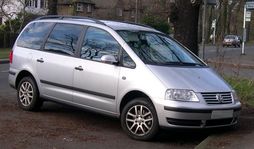
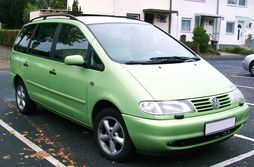
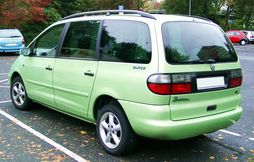
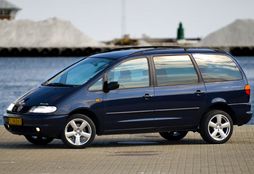
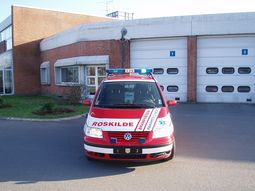
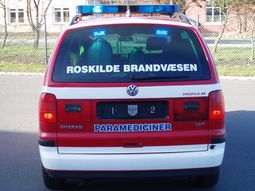
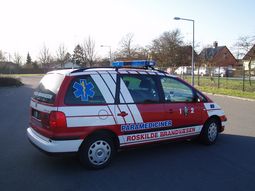
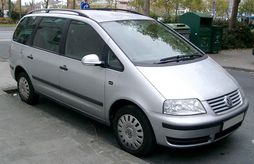
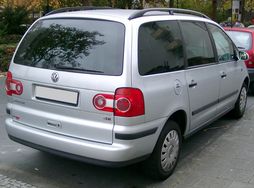
|